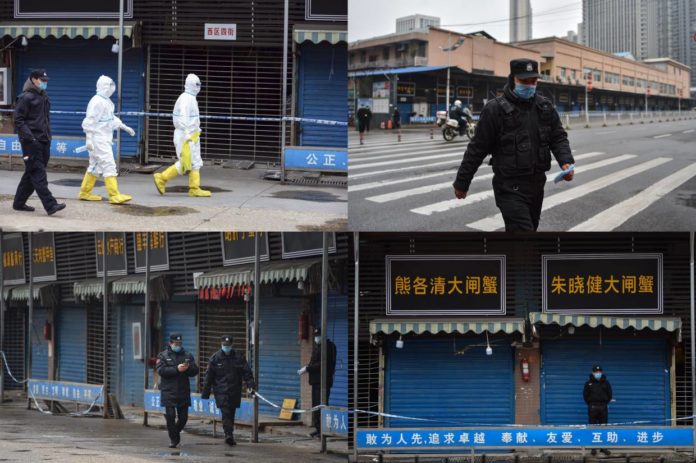With the Corona virus having infected over 700,000 people and killed more than 33,000 in almost across 177 countries, questions are being raised in each country about the level of preparedness of their respective healthcare and administrative system, and their capability to combat the virus by flattening the curve.
Neither has any country fully rid itself of the coronavirus, nor can we be sure of any country having permanently contained the spread of the virus at this moment, but China and South Korea seem like they could be the first to reach this goal based on current statistics.
China:
Being the country where the virus started infecting humans from late November 2019, it lost precious time to prepare for the worst due to the time it took for the authorities to understand the level of threat it poses and also the nature of the virus which takes days before its victims show any symptoms. Over 15,000 cases were reported in a single day on the 13th of February.
Eventually the country was effective in enforcing a complete lockdown in the City of Wuhan, a city of 11 million people, where the first cases were documented. Aggressive social distancing was implemented across the country and many stadiums were converted into quarantine centers. A thousand-bed coronavirus hospital was built within 10 days.
The bold measures have yielded positive results in flattening the curve, with the country being able to decrease and hold the number of infected cases to under 200 per day for the past 30 days. The rate of doubling of cases is 48 days, which is the lowest in the world as of 29th March. The country is now easing the lockdown in Wuhan and businesses have started operating even in the worst affected regions.
South Korea:
The north-east asian country of 51 million people has become one of the most successful in battling coronavirus. They have been able to achieve this feat without declaring a lockdown. The experience of similar epidemics in the previous decades and a high degree of social trust has also contributed to their success this time.
The government did downplay the seriousness of the pandemic initially but they were quick to realise their mistake and rapidly implemented targeted programmes to battle the virus. A number of manufacturers were asked to prioritise the mass manufacture of testing kits. The aim was to quickly test and notify as many people as soon as possible. Easily accessible testing solutions such as testing booths in public places and drive through testing centres, along with aggressive public messaging achieved a high number of tests which also provided accurate data on spread pattern.
The government used existing mass surveillance and personal data collection systems to back-track a patient’s previous movements and interactions and publicly warn others who may have been at the same place and time as the patient was.
These measures have been followed by a drastic reduction in the number of daily cases from more than 800 at the beginning of March to under 150 as of 29th of March. South Korea’s rate of doubling of cases now stands at 27 days, which is the second lowest in the world.
How did they manage?
The pre-existing socio-political realities of these two countries have had a major influence on their success in containing the spread of the virus. Countries that wish to implement the same policies must also note what sets them apart from many others.
Rapid Mobilisation:
Although China lost precious time to nip the pandemic in the initial stage, the country rapidly mobilised its resources and streamlined the entire operation to make up for the lost time. Other countries cannot implement policies in the same way without accounting for their social realities.
Surveillance and Social Trust:
A high level of public trust in government institutions and a pre-existing network of deep surveillance in South Korea has greatly assisted the authorities to track and isolate a large number of potential carriers of the virus. Many countries do not have the same level of surveillance infrastructure, which always comes at the cost of the right to privacy. Many governments may not enjoy the same level of public confidence thus decreasing the effectiveness of similar measures to contain the pandemic.
Technology and Political Will:
The building of dedicated hospitals in 10 days, installing a large number of quick and accessible testing booths in public, the use of individual tracking systems, all at short notice are the results of pre-existing industrial and technological capacities supported by political will. Many developing countries may not have access to the similar resources within their boundaries. Countries that have the capabilities are not showing the required political will.
Time and Money:
The cost of testing and treatment have been taken up by the governments in both countries from the beginning. This resulted in greater voluntary participation by its people who do not have to think about the financial burden of tests and treatments. Many countries have still not taken up this responsibility therefore indirectly discouraging potential careers from getting tested immediately. The longer it takes to test, the longer it takes to fight coronavirus.
The most important lesson from China and South Korea is that they fully utilised all of their existing resources to fight the virus. Their methods may be questionable and the ends may not justify the means. But how will the world justify its unwillingness to make use of its available resources at the time of an existential crisis?


























